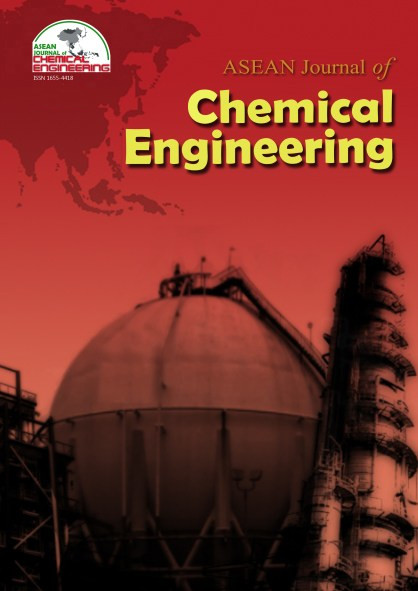Mathematical Model for Agglomeration Process of Milk Powder
Abstract
Stickiness during milk spray drying can lead to the agglomeration of milk powder and damage the processing equipment. A mathematical model can achieve a better understanding. In this work, the Distinct Element Method (DEM) simultaneously with Computational Fluid Dynamics (CFD) was used to describe skim milk powder's agglomeration process. The study comprised 2 parts: surface stickiness mechanism and agglomeration of sticky powder. Start with particle formation, the droplet size, and the number of particles produced can be calculated and used to predict the droplet's surface stickiness. These reveal the effect of moisture content, droplet surface temperature, droplet size after drying, and sticky point temperature. Then, the agglomeration of sticky powder inside the spray chamber was predicted. Besides, the particle and fluid motion inside the spray chamber were also determined. Then, the particle size distribution after agglomeration was obtained. Furthermore, parts of the model were validated with the experimental data of Williams et al. (2009), which has three different droplet sizes, 56.8, 78.28, and 108.5 micrometers. The results gave the same trend as the sticky surface of the powder. The droplet's moisture contents rapidly decreased in the first period and fell to a critical value, which was 0.044, 0.048, and 0.061 kg water/kg solid, respectively. The periods of a sticky surface were around 0.033, 0.03, and 0.024 seconds. The largest droplet size was selected for the study of the agglomeration process. This model could predict the agglomeration of sticky powder since there were 216 from 900 droplets agglomerated. Moreover, the largest droplet size was 100.6 micrometers, and the most popular was 79.9 micrometers, which were the size of the un-agglomerated powder.
References
2. Riedel, F., Düsenberg, B., Schmidt, J., Bück, A., and Peukert, W. (2020). “Production of PBT/PC multi-material particles via a combination of co-grinding and spray-agglomeration for powder bed fusion”. Procedia CIRP, Vol.94, pp. 100-104.
3. Phosanam, A., Chandrapala, J., Huppertz, T., Adhikari, B., and Zisu, B. (2020). “Changes in physicochemical and surface characteristics in model infant milk formula powder (IMF) during storage”. Drying Technol., pp.1-11.
4. Pombo, J. C. P., de Medeiros, H. H. B. R., and da Silva Pena, R. (2020). “Optimization of the spray drying process for developing cupuassu powder”. J. Food Sci. Technol., Vol 57, pp. 4501-4513
5. Sewalt, E. J., Zhang, F., van Steijn, V., van Ommen, J. R., and Meesters, G. M. (2020) “Static and Dynamic Stickiness Tests to Measure Particle Stickiness”. KONA Powder and Particle Journal, 2021017.
6. Archer, J., Walker, J., Gregson, F. K., Hardy, D. A., & Reid, J. P. (2020). “Drying Kinetics and Particle Formation from Dilute Colloidal Suspensions in Aerosol Droplets”. Langmuir.
7. Ferrari, G., Meerdink, G., and Walstra, P., (1989), “Drying kinetics for a single droplet of skim milk”, Journal of Food Engineering, Vol. 10, pp. 215-230.
8. Chen, X.D., and Lin, S.X.Q., (2004), “The reaction engineering approach to modeling drying of milk droplets”, Drying’2004-Proceedings of the 14th International Drying Symposium (IDS’2004), Vol. C, pp. 1644-1651.
9. Williams, A.M., Jones, J.R., Paterson, A.H.J., and Pearce, D.L., (2009), “Effect of fines on agglomeration in spray dryers: An experimental study”, Int. J. Food Eng., Vol.5.
10. Filkova, I., Huang, L.X. and Mujumdar, A.S., (2007), Handbook of Industrial Drying, CRC Press Taylor and Francis Group, Boca Raton, pp. 223-224.
11. Ozkan, N., Walisinghe, N., and Chen, X. D., (2002), “Characterization of stickiness and cake formation in whole and skim milk powders”, J. Food Eng., pp. 293–303.
12. Paterson, A.H.J., Brooks, G.F., Foster, K.D., and Bronlund, J.E., (2005), “The development of stickiness in amorphous lactose at constant T-Tg levels”, Int. Dairy J., Vol. 15, pp. 513–519.
13. Paterson, A.H.J., Bronlund, J.E., Zuo, J.Y., and Chatterjee, R., (2007), “Analysis of particle gun derived dairy powder stickiness curves”, Int. Dairy J., Vol. 17, pp. 860–865.
14. Murti, R.A., Paterson, A.H.J., Pearce, D.L., and Bronlund, J.E., (2009), “Stickiness of skim milk powder using particle gun technique”, Int. Dairy J., Vol. 19, pp. 137-141.
15. Gordon, M., and Taylor, J.S., (1952), “Ideal copolymers and the second-order transitions of synthetic rubbers. I. Non-crystalline copolymers”, Int. J. Appl. Chem., Vol. 2, pp. 493–500.
Copyright holder for articles is ASEAN Journal of Chemical Engineering. Articles published in ASEAN J. Chem. Eng. are distributed under a Creative Commons Attribution-NonCommercial 4.0 International (CC BY-NC 4.0) license.
Authors agree to transfer all copyright rights in and to the above work to the ASEAN Journal of Chemical Engineering Editorial Board so that the Editorial Board shall have the right to publish the work for non-profit use in any media or form. In return, authors retain: (1) all proprietary rights other than copyright; (2) re-use of all or part of the above paper in their other work; (3) right to reproduce or authorize others to reproduce the above paper for authors’ personal use or for company use if the source and the journal copyright notice is indicated, and if the reproduction is not made for the purpose of sale.



